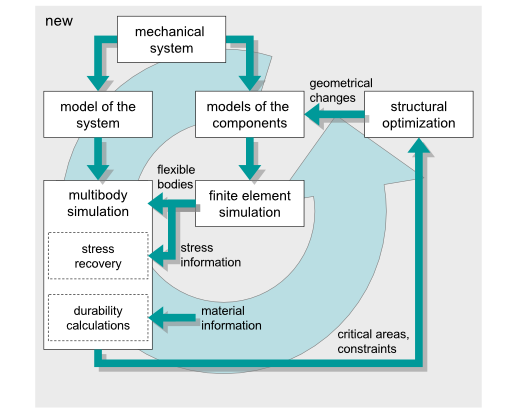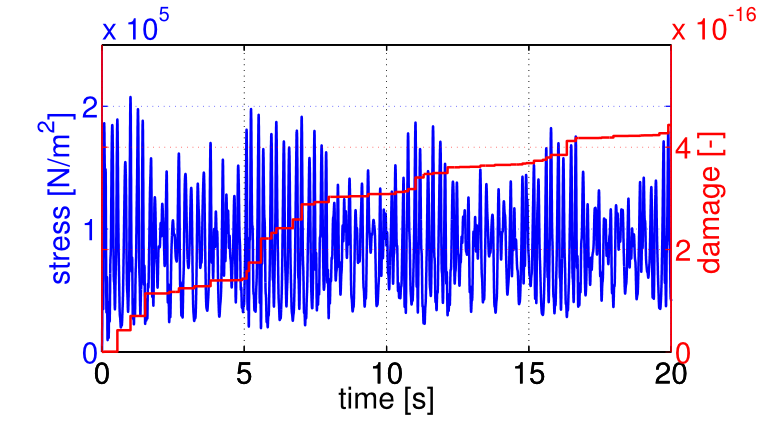 |
|
||||||||||||||||||||||||||||||||||
|
|||||||||||||||||||||||||||||||||||
Project Description
In the modern development process of mechanical systems, the importance of numerical simulation is continuously increasing. With the help of analysis in multibody or finite element systems and durability calculations, the engineer can make statements about the behaviour and properties of the mechanical system in a very early phase of the development process. Resultant, there is the possibility to virtually accompany and control the development process and to propose prototypes meeting the respective requirements. The structural optimization is a very appropriate tool for the development of the optimal design of a component in a mechanical systems. The structural optimization can be described as a mathematical optimization algorithm, that modifies the geometry of the optimized component, regarding the desired requirements. Depending on the level of geometrical changes, the structural optimization can be distinguished in topology optimization, shape optimization and sizing. The objective of this project is to integrate the structural optimization, especially the topology optimization, in a coupled simulation process. Thereby the effects of the structural optimization of componentes on the entire mechanical system have to be investigated. In this context shape and topology optimizations regarding the durability of components have to be carried out. Thereby constraints concerning the stiffness of the component have to be fulfilled, since the optimized component often has a bearing function in the entire mechanical system. The presented optimization process is based on a conventional approach. This conventional approach can be divided into several tasks. The multibody simulation provides the loads that are applied to the considered component. With respect to durability, critical areas on the surface of the component can be identified. That is done with the help of a finite element based durability analysis. These critical areas are the input for the structural optimization, that modifies the geometry of the component, regarding a maximization of durability. Since changes in the component's geometry also effect the behaviour of the entire mechanical system, the structural optimization has also to be considered in the multibody simulation and must fulfill constraints there.
A further development of this process is the integration of the durability analysis into the multibody simulation. Therefore, an upstream stress recovery during the runtime of the multibody system is necessary. Thus, critical areas on the surface of the component can be identified directly from the multibody simulation and they can accordingly be forwarded to the structural optimization algorithm together with the optimization constraints. Compared to the conventional approach, the number of interfaces and functional blocks decreases. A performance gain regarding computation times and data size can be achieved.
Related PagesContact |
| Last modified
2.9.2014 ( |

